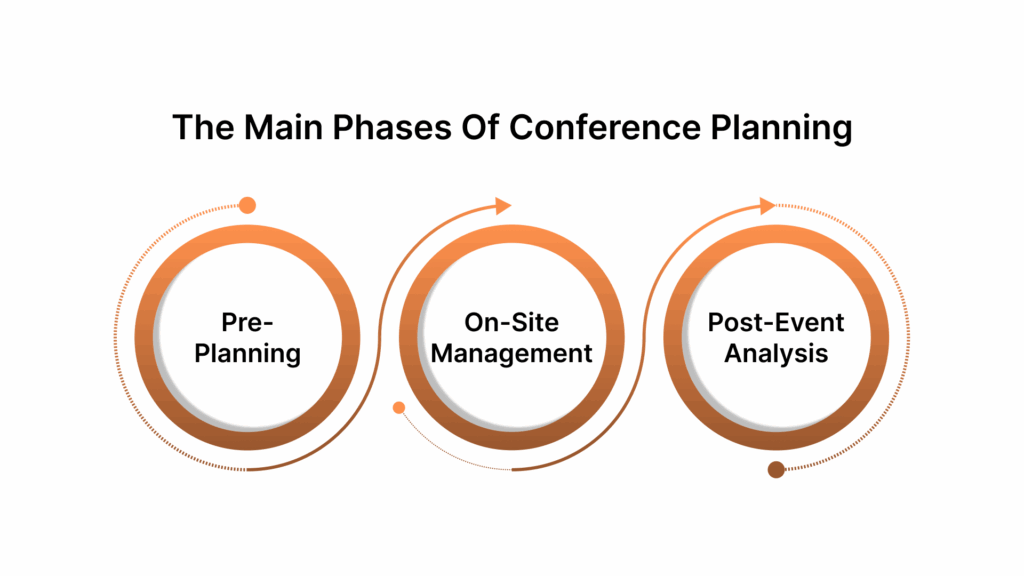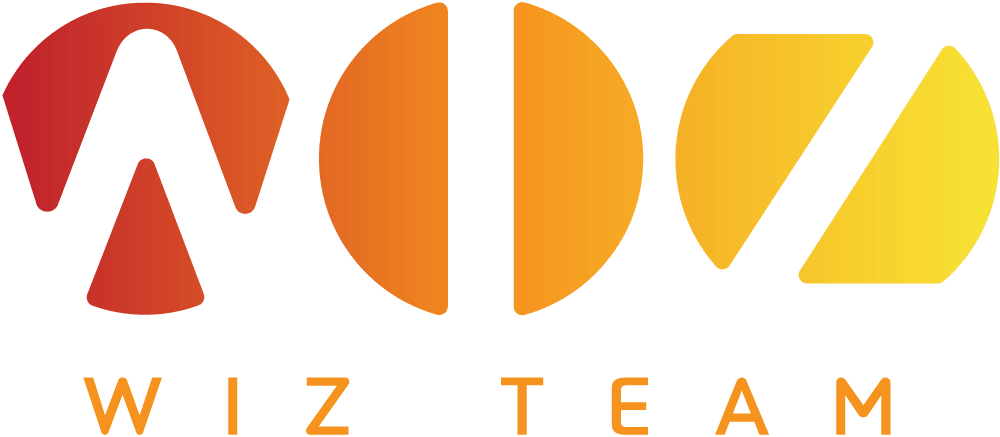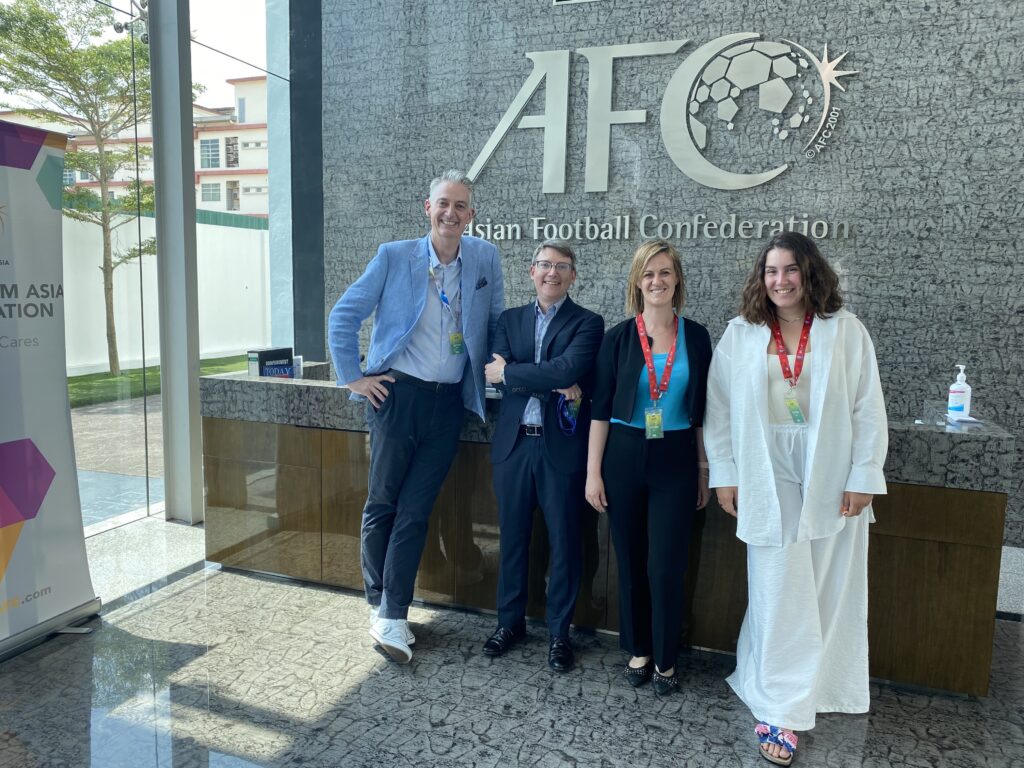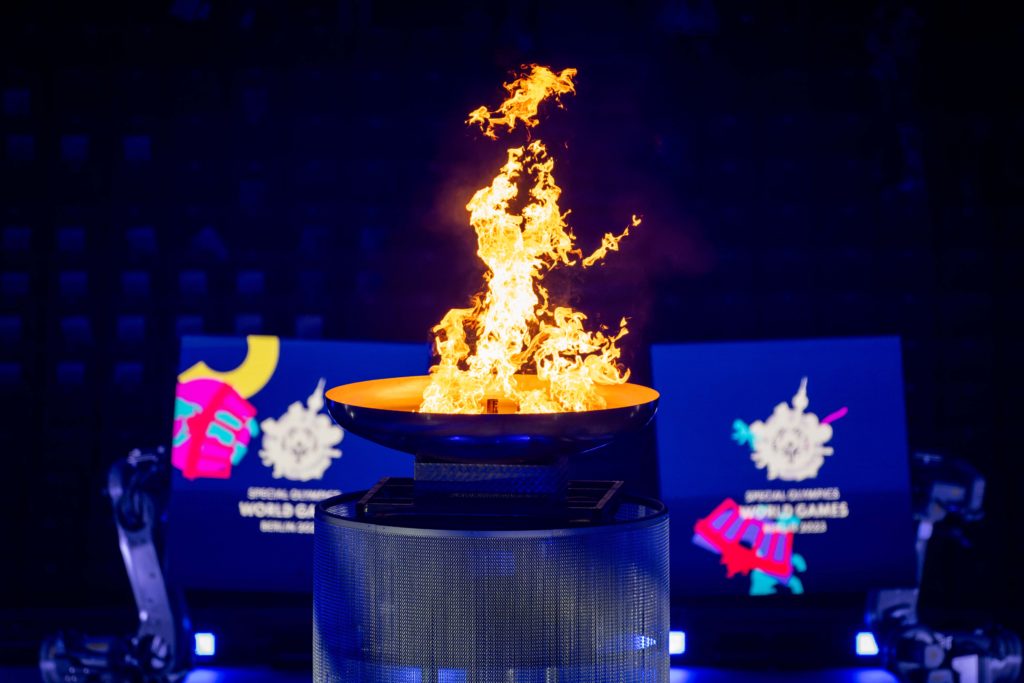Organizing a conference is about crafting an experience that aligns with your organization’s objectives, engages your audience, and delivers measurable value.
According to a recent survey, 52% of event planners identify increasing attendance as their top challenge. But with the objective of conference planning comes complex challenges like managing budgets, coordinating speakers, and ensuring smooth technology integration . And honestly, it can feel overwhelming.
But here’s the thing, it doesn’t have to be so overburdening. You can optimize each stage of your event with confidence, knowing you have the right strategy, the right tools, and the right team in place.
This guide is for you if you are planning your first conference or fine-tuning a tried-and-true approach. You’ll get a clear breakdown of the entire conference planning process, along with insights from the field.
What Is Conference Planning?

The purpose of any conference is to bring people together for a shared experience that aligns with your organization’s objectives. The objective could vary vastly ranging from education, networking, or driving engagement. But to fulfil that you need a structured approach and planning to craft an event that delivers real value, leaving participants inspired and your goals achieved.
The goal of conference planning is to successfully bring people together around a common purpose and deliver measurable value. It’s a deliberate process that begins with asking “why” and concludes with a room (or virtual space) full of engaged, inspired participants.
Conference planning starts before the event itself, typically starting months or even a year in advance, and involves securing the right venue, arranging speakers, managing logistics, and ensuring everything runs smoothly on the day.
What Is A Good Conference Plan?
An effective conference plan is detailed yet flexible, with clear goals, timelines, and responsibilities, and is regularly reviewed and updated to ensure success. It is an organized roadmap that guides every aspect of your event from initial concept to post-event analysis.
Key elements of a strong conference plan include:

Assembling a Team: Identify roles and responsibilities early to ensure smooth coordination.
Setting Objectives: Define SMART goals (Specific, Measurable, Achievable, Relevant, Time-bound) to guide planning and measure success.
Identifying the Target Audience: Understand who the conference is for to tailor content and marketing efforts effectively.
Developing a Budget: Outline all potential expenses and explore funding options like sponsorships to manage costs.
Choosing a Venue and Format: Select a location and decide on the event format (in-person, virtual, or hybrid) that best suits your objectives.
Modern technology: It plays a crucial role in smooth execution of a conference planning . Wiz-Team’s Event-Works platform is one such solution, enabling organizers to manage every phase of the event lifecycle, from pre-planning and logistics to real-time attendee engagement and post-event analysis.
Also read: Event-Works unwrapped: discover how our all-in-one solution supports every phase of event management
What Are The Main Phases Of Conference Planning?

Conference planning is a multi-phase process, each stage playing the needed role in the event’s success. From the pre-planning phase to executing a flawless event on-site, and finally, analyzing outcomes post-event, every phase requires careful attention.
Here’s a breakdown of these key phases to give you a clear idea about organizing a successful conference.
1. Pre-Planning (Foundation)
6 to 12 months before the event: This phase focuses on setting the strategic groundwork: defining objectives, creating a budget, selecting the venue and date, forming the planning team, and designing the event agenda.
2. On-Site Management (Execution)
Event Day: In this phase, you execute your plan by managing registration and check-in, overseeing attendee and speaker experience, monitoring event flow, and ensuring all technology and logistics run smoothly.
3. Post-Event Analysis (Reflection)
1 to 4 weeks after the event: After the event, this phase involves collecting feedback, analyzing performance against objectives, evaluating budget and resource allocation, assessing the event’s ROI, and planning for future improvements.
15 Steps To Follow For a Successful Conference Planning
These steps provide a structured approach to each phase of conference planning. Each action is designed to keep you on track and ensure your conference meets its goals and delivers measurable results.
Here’s a table summarizing the phases, steps, and key actions in conference planning.
Phase | Step | Key Actions |
Pre-Planning (Foundation) | 1. Define Clear Objectives | Set clear goals (e.g., attendance, engagement, brand awareness) |
Pre-Planning (Foundation) | 2. Create a Detailed Budget |
|
Pre-Planning (Foundation) | 3. Select the Right Venue and Date |
|
Pre-Planning (Foundation) | 4. Form Your Team and Assign Roles | Assign roles (logistics, speakers, marketing) |
Pre-Planning (Foundation) | 5. Plan Your Event Agenda | Design a balanced schedule with sessions, breaks, and networking |
On-Site Management (Execution) | 6.Registration and Check-In | Make registration easy with tech (e.g., mobile apps) |
On-Site Management (Execution) | 7. Manage Attendee Experience | Ensure a welcoming environment with clear signage and support |
On-Site Management (Execution) | 8. Ensure Speaker and Session Management | Keep speakers on time and ensure smooth transitions |
On-Site Management (Execution) | 9. Monitor Event Flow | Adapt to changes and resolve issues on the spot |
On-Site Management (Execution) | 10. Manage Technology and Logistics | Oversee AV, Wi-Fi, and logistics for seamless execution |
Post-Event Analysis (Reflection) | 11. Collect Feedback | Gather attendee and speaker feedback for insights |
Post-Event Analysis (Reflection) | 12. Analyze Performance Against Objectives | Measure goals like attendance, engagement, and feedback |
Post-Event Analysis (Reflection) | 13. Evaluate Budget and Resource Allocation | Compare actual spending to planned budget |
Post-Event Analysis (Reflection) | 14. Assess Evet’s ROI | Measure brand impact, networking, and attendee satisfaction |
Post-Event Analysis (Reflection) | 15. Plan for the Next Event | Use feedback and metrics to improve future events |
Phase1: Foundation For Conference Planning (Pre-Planning Phase)
The foundation for conference planning is to establish the framework that will ensure a successful start.
Step 1: Define Clear Objectives for Your Conference
The first step in any successful conference planning process is to set clear and measurable objectives.
Ask yourself:
What do you want to achieve with this event? Are you looking to share knowledge, encourage networking, launch a new product, or position your company as an industry leader?
Key Metrics: Define the key performance indicators (KPIs) that will measure the success of your conference. These could include metrics such as:
Attendance targets (e.g., aiming for 500 attendees)
Engagement metrics (e.g., app interactions, session participation)
Lead generation (e.g., signing up a set number of leads for future outreach)
Targeted Audience: Clearly define your target audience. Will you focus on industry professionals, students, or specific stakeholders? Tailoring your goals will help you craft the most relevant conference experience.
Example: “Our goal is to attract 400 marketing professionals and generate 200 leads for future collaborations.”
Step 2. Create a Detailed Conference Budget
Budgeting will guide your decision-making throughout the entire process, helping you allocate funds for everything from venue selection to speaker fees and catering.
Key Expenses: Outline all potential expenses such as:
Venue Costs: Renting the event space, AV equipment, and any additional facilities required.
Speakers: Fees for keynotes and session leaders, including travel and accommodation.
Technology: Expenses for event management software, virtual conference platforms (if hybrid), and attendee apps.
Marketing and Promotion: Costs for promoting the event across social media, websites, and email campaigns.
Catering and Meals: Budget for meals, beverages, and snacks during breaks.
Contingency Fund: Set aside 10-15% of your budget for unforeseen costs. This buffer ensures you’re not caught off guard by last-minute expenses.
ROI Considerations: The conference budget should directly align with the ROI you expect. For example, if lead generation is your primary goal, allocate more funds to marketing and networking opportunities, which directly drive engagement.
Step 3: Select the Right Venue and Date
Choosing the right venue is a primary decision in the pre-planning phase. The venue must align with your conference goals, audience size, and logistical needs.
Venue Selection: Consider the following factors when selecting a venue:
Location: Choose a venue near transportation hubs for easy access.
Size and Capacity: Ensure the venue fits your attendee count to avoid overcrowding or emptiness.
Facilities: Verify the venue has essential amenities (breakout rooms, AV, Wi-Fi) and consider hybrid options if needed.
Date Selection: You’ll need to select a date that works well for your target audience and avoids overlapping with other major industry events. Additionally, consider seasonal factors. For example peak seasons may bring higher costs, while off-season events might see lower attendance but reduced expenses.
Step 4: Form Your Team and Assign Roles
Building the right team is essential for the success of your conference. Assembling a diverse group of individuals who can handle different aspects of the event ensures that every detail is covered.
Some of the essential roles to assign include:
Roles | Responsibilities |
Event Coordinator | Oversees the entire event, ensuring all elements run smoothly. |
Logistics Manager | Manages venue setup, vendor coordination, transportation, and equipment. |
Marketing Lead | Handles all promotional activities to ensure maximum attendance. |
Speaker Liaison | Coordinates with speakers, ensuring they have everything they need, from presentation materials to travel arrangements. |
On-Site Volunteers | Assists with registration, attendee support, and troubleshooting during the event. |
Ensure that your team communicates effectively throughout the process. Regular meetings and updates will help keep everyone aligned and ensure there are no gaps in planning.
Step 5: Plan Your Conference Agenda
The conference agenda is your blueprint for the event. A well-designed agenda sets the tone for the entire conference, ensuring that each session, break, and networking opportunity serves a specific purpose.
Consider the following components:
Keynote Speakers: Powerful opening and closing keynotes that set the tone for the conference.
Session Tracks: Breakout sessions tailored to specific topics or interests that resonate with different segments of your audience.
Networking Opportunities: Schedule plenty of time for coffee breaks, roundtables, and informal networking events where attendees can engage with each other.
Meals and Breaks: Include ample time for meals and casual interactions, as these are important for attendee satisfaction.
Time Management: Ensure each session stays within its allotted time to avoid running behind schedule. Allocate some buffer time between sessions to allow for smooth transitions and breaks.
Phase 2: Executing Your Conference Plan
The On-Site Management phase is where all the pre-planning comes to fruition. This is when the conference takes place, and your focus shifts to ensuring everything runs smoothly, on time, and according to plan.
Here’s how to handle each step with precision and intent:
Step 6: Registration and Check-In
One of the first touchpoints attendees experience is registration. Ensuring a smooth, quick, and hassle-free check-in process is crucial for setting a positive tone for the entire event.
Here’s what you should do
Use event management technology (such as Event-Works) to automate registration and check-in. This reduces long lines and delays, and allows attendees to get settled quickly.
Offer self-check-in kiosks or a mobile app for easy access to event materials and schedules.
Ensure your staff is well-trained to assist with any issues and provide directions or assistance.
To make the check-in process even smoother, consider using an end-to-end event management platform like Event-Works by Wiz-Team. It automates registration, smoothens event logistics, and enhances the overall attendee experience.
Step 7: Manage Attendee Experience
Creating a memorable experience for every attendee is the key to a successful conference. From the moment they arrive until the last session, every interaction should leave a positive impression. Attendees who feel valued and well-supported are more likely to return for future events and recommend them to others.
Here’s what you should do
Provide clear signage throughout the venue for easy navigation (e.g., directional signs, session room labels, and maps).
Offer a help desk or support team for immediate assistance with any questions or concerns.
Maintain the energy by engaging attendees through casual activities or ice-breakers during breaks.
Make sure meals, snacks, and refreshments are easily accessible at the right times, as this is a key part of attendee satisfaction.
Distribute thoughtful welcome kits and premium swag bags that include the event agenda.
Step 8: Ensure Speaker and Session Management
Speakers sessions need to run smoothly to deliver valuable content to your attendees. It’s essential to keep everything on track to ensure speakers are prepared and sessions are delivered as planned. A well-run session keeps attendees engaged and maintains the event’s professionalism.
Here’s what you should do
Make sure each speaker has all the resources they need (AV equipment, presentation tools, and a clear understanding of the session flow).
Keep an eye on time management, ensuring sessions don’t run over and that speakers have adequate time for Q&A.
Assign a staff member to liaise with speakers before and during the session to handle any last-minute needs or tech issues.
Have a dedicated session manager for each track to ensure the speakers stay on schedule and assist them with any last-minute changes.
Step 9: Monitor Event Flow
A smooth event flow is crucial for maintaining momentum and ensuring the conference delivers a positive experience. Managing time effectively prevents attendee burnout and keeps them engaged.
Here’s what you should do
Continuously monitor the event’s flow and schedule. If a session runs over, adjust the timing of subsequent sessions to minimize disruption.
Ensure breaks, meals, and networking sessions occur at appropriate times and that they don’t overlap with important sessions.
Be prepared for technical issues (e.g., AV equipment failure, Wi-Fi issues). Have a contingency plan for such situations and an on-site technical team available for troubleshooting.
Have real-time updates available through a mobile app or digital screen for changes in the agenda, ensuring attendees stay informed.
For example, at the ThinkSport conference, Wiz-Team’s EW ToGo mobile app provided real-time updates and participant tracking via QR codes, keeping attendees informed and engaged.
Step 10: Manage Technology and Logistics
Event technology plays an essential role in modern conferences, from managing the schedule and registration to delivering presentations and connecting virtual participants. Ensuring all tech elements work seamlessly is crucial to avoid disruptions.
Here’s what you should do
Test all technology beforehand: AV equipment, microphones, live-streaming setups, and Wi-Fi should be functional and ready for use.
Have an on-site tech support team available for troubleshooting any issues with event apps or digital tools.
If running a hybrid or virtual event, ensure virtual attendees have a smooth, interactive experience with good audio/visual quality and technical support.
Have a dedicated AV team on-site to monitor live-streaming quality and ensure virtual attendees can participate in real-time discussions and Q&A.
Phase 3: Post-Event Analysis (Reflection)
The Post-Event Analysis phase is where the true value of your conference planning comes into play. This phase allows you to assess the success of the event, gather insights, and refine your approach for future conferences.
By analyzing outcomes, collecting feedback, and measuring ROI, you’ll have the data necessary to continuously improve your events and achieve greater success in the future.
Step 11: Collect Feedback from Attendees and Speakers
Feedback is helpful in assessing how well the conference met its goals and pinpoint areas for improvement. Gathering input from both attendees and speakers helps you understand how well the conference met its objectives and identify areas for improvement.
Here’s what you should do
Surveys: Send out post-event surveys to attendees, asking for feedback on various aspects of the conference (e.g., content, venue, speakers, logistics, networking opportunities). Use a mix of quantitative (ratings) and qualitative (open-ended) questions.
Speaker Feedback: Reach out to speakers to get their perspective on the event’s organization, tech setup, and audience engagement. This will give you insight into how well the event was executed from their point of view.
Social Media Monitoring: Analyze social media posts about your conference. What are attendees saying? What are the trending topics? Social media sentiment can offer an immediate pulse on how your event was received.
Step 12: Analyze Performance Against Objectives
Now that you have feedback, it’s time to compare the outcomes to the goals you set in the Pre-Planning phase. This will allow you to assess the success of the conference in relation to your initial objectives and see how close you came to achieving them.
Here’s what you should do
Attendance vs. Goal: Measure the number of attendees against your initial attendance targets. Did you meet or exceed expectations?
Engagement: Evaluate how engaged your attendees were during the event. Look at app usage (if available), session attendance, and interaction rates on social media.
Lead Generation: If lead generation was one of your goals, assess how many leads were gathered and how valuable those leads are to your organization.
Session Ratings: Use attendee feedback to gauge how well sessions performed. Which ones had the highest ratings? Were there any topics or sessions that didn’t resonate?
Step 13: Evaluate Budget and Resource Allocation
Once the event is over, it’s essential to evaluate your financial performance. This step will help you understand whether you stayed within budget and highlight areas where you may have overspent or underspent.
Here’s what you should do
Budget Tracking: Review expenses (venue, speakers, catering, marketing, tech) and compare actual spend to the budget.
Cost per Lead or Attendee: Calculate cost per lead/attendee to assess cost-effectiveness.
Vendor Performance: Evaluate supplier performance (catering, AV, tech) to ensure they met expectations and budget.
Step 14: Assess the Event’s ROI
Return on investment (ROI) is a critical measure of success in conference planning. It helps you understand the broader impact of your event on organizational goals, including brand visibility, lead generation, and attendee engagement.
Here’s what you should do
Lead Conversion: Measure how many leads converted into actual clients, partners, or customers. This is especially important if the event’s primary goal was lead generation or sales.
Brand Exposure: Assess the visibility your brand gained from the conference. How much media coverage did the event receive? What was the social media reach?
Networking Outcomes: Look at the connections made during the event. How many meaningful partnerships or collaborations were formed?
Step 15: Plan for the Next Event
Finally, use the insights gathered from feedback, performance metrics, and ROI analysis to refine your approach for future conferences. Continuous improvement is key to staying relevant and ensuring your events remain engaging and effective.
Here’s what you should do
Identify Key Takeaways: What worked well? What can be improved? Use your analysis to identify what elements of the conference were most impactful and which need adjustments.
Refine the Strategy: Based on attendee feedback and data, revise your strategy for the next event. Whether it’s improving session formats, increasing networking opportunities, or enhancing the event’s technology, make sure to incorporate lessons learned.
Start Early: Begin planning your next event based on what worked. Having an early start (6-12 months)allows you to secure better venues, attract high-profile speakers, and fine-tune your goals and objectives.
With a clear understanding of each phase in the conference planning process, the next step is ensuring that everything runs according to the plan. To bring this vision to life, Event-Works by Wiz-Team steps in as an all-in-one platform, designed to organize every stage of your conference planning.
Event-Works by Wiz-Team: For Effortless Conference Planning
Event-Works by Wiz-Team is an all-in-one event management platform designed to simplify every phase of conference planning. From registration and logistics to on-site management and post-event analytics, it offers a customizable, modular design that adapts to any event size, providing efficiency, flexibility, and complete control.
Some of the key features of Event-Work are as follow:
Customizable Modular Tools: Choose only the features you need for each event, making the platform flexible and easy to adapt.
Centralized Registration: Register participants, speakers, and volunteers all in one place, with tools to collect and analyze important information.
Accreditation & Access Control: Quickly create badges and set permissions to manage who can access different areas, keeping everyone secure.
Accommodation & Travel Management: Organize hotel bookings, travel plans, and logistics for everyone attending the event.
Communication Automation: Automatically send emails and notifications so everyone stays updated without extra effort.
Volunteer & Workforce Management: Easily recruit, schedule, and communicate with volunteers and staff through a dedicated portal.
Activity & Session Scheduling: Build event agendas, assign speakers, and manage session details smoothly.
Real-Time Data & Analytics: Get live updates and reports to track registration, engagement, and how the event is performing.
Mobile Accessibility: Let teams and attendees access schedules, maps, and updates from their mobile devices.
Security & Compliance: Protect data with strong security, regular audits, and compliance with international standards.
Consultancy & Support: Access expert advice and 24/7 support to help manage even the most complex events.
Wiz-Team’s Conference Planning Success Stories
At the EU Arctic Forum, Wiz-Team’s Event-Works platform enabled a seamless and secure event experience by powering an innovative self-check-in process. Participants used QR codes for fast entry, with badges printed and ready after security checks.
The platform’s access control and accreditation modules allowed real-time monitoring of attendee movement and managed access to restricted areas, enhancing both security and efficiency. Event-Works’ integrated communications tools also supported instant updates and operational coordination.
Conclusion
Successfully executing a conference requires a strategic approach to conference planning, from setting clear objectives during the pre-planning phase to ensuring smooth execution on-site and gathering valuable insights through post-event analysis. Each step in the process should align with your organization’s goals to create an event that delivers lasting value.
Wiz-Team’s Event-Works platform offers the tools and expertise necessary to ideate your event logistics, enhance attendee engagement, and provide insightful post-event analysis. Learn how Wiz-Team can support your next conference and drive meaningful outcomes.
#WizJourney









